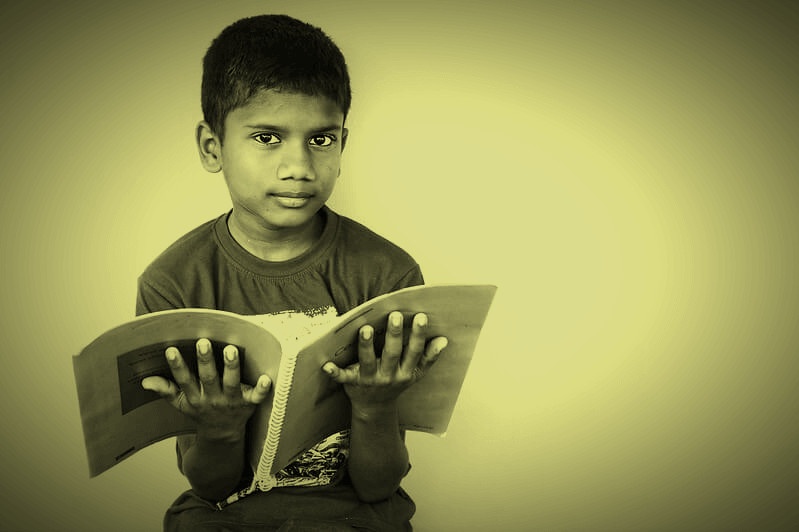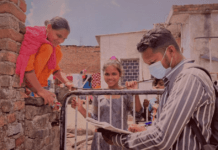Suspending all educational activities that involve large gatherings at least until May 3rd has brought about significant changes to schools’ academic cycles, board examination dates and college entrances for the next year. At the same time, there has been a push towards deploying technology for instructional purposes; online learning portals such as SWAYAM or E-Pathshala and the integration of traditional distance education programmes via the internet have taken centre stage.
This push is understandable. Virtual classrooms, digital content and paid learning applications can reduce the disruption to schooling. Yet, these are viable alternatives only for a very small section of Indian students. Others, like the children of migrant workers, are not equally equipped to utilize these “ed-tech” solutions.
So, as life in a pandemic unravels in India, what roles can we expect our schools and other institutions to play? Under the exceptional circumstances of social distancing, what meaning does education hold for families who have returned to their villages? Isn’t it time we built an education system that is resilient?
Ed-Tech Works, but for Whom?
The past three weeks have shown us that more family time, commute-free days and the endless possibilities of online learning are all luxuries that cannot be enjoyed by the working classes and the poor.
Learners, while taking an online course, did you wish it had more features?
If yes, then share your suggestions on how we can enhance the online education
?Use #BharatPadheOnline on twitter & tag @HRDMinistry & @DrRPNishank
? Email at [email protected] pic.twitter.com/Hk4ZrTwHwk— Dr Ramesh Pokhriyal Nishank (@DrRPNishank) April 11, 2020
A number of schools have begun sharing instructional material that can be accessed on mobile phones. But, digitally-enabled families who have the access and space required to utilize virtual education are neither common nor uniformly distributed. Despite an overall increase in internet penetration this decade, individual usage still hovers around 34 per cent of India’s population.
Now, with over 90% of the Indian workforce employed in the informal sector, the unavailability of work has burdened families with severe food and health security concerns. Seasonal migrant labourers, who spend three to eight months at work sites away from their villages, have been among the most affected amongst the informal workers. Several children also endured long journeys and empty stomachs as desperate families set on foot to reach places of support and safety. In a matter of days, the health-related disaster turned into distress migration in India, largely as a result of insufficient and delayed public service mechanisms.
The condition of migrant families demands probing, especially for the sake of their children. If patterns of seasonal migration have been well-established, why do we still not have educational institutions that are designed for the needs of migrant families?
Instead of thinking about seasonal migration as a cause for disruption and discontinuation in a child’s life, can we build public schools that are responsive to the livelihood needs of the working classes? With internal migration accounting for nearly one-fifth of India’s labour and growing (as of the 2017 Economic Survey), when do we make mobility an important part of our everyday schooling?
Resilient Communities Require Robust Public Institutions
The first necessary step would be to re-centre our public institutions and essential service delivery around socially marginalized communities. Ensuring universal access to quality education and developing responsive institutions can go a long way in creating resilience as well as capacity.
First off, the Right to Education (RTE) Act need not be just a procedural step towards increasing access to schools. It must be expanded to take care of food, health and other securities that are equally responsible for bringing a child into school. The Act also needs to be expanded with regard to the child’s family, especially during disasters.
You may also like: A Low Benchmark: The State of Infrastructure in Our Schools
Given that seasonal migration is central to a number of sectors like agriculture, construction, brick-making and the garment industry, good quality residential schools need to be set up at work sites as well as in taluks/villages. This way, families can take advantage of these institutions when they migrate for months. Teachers and school administrators will have to devise a plan to offer the required support and enhanced learning opportunities for students whose families migrate. There is an urgent need to shift focus away from assuming seasonal migration as a problem and a hurdle to success in school. Instead, schools need to make use of the language(s) that the migrant children are most comfortable, design bridge courses to help them catch up and figure out learning goals.
Next, Anganwadi and ASHA staff need to be remunerated better. They have been at the front line of reporting symptomatic cases and spreading awareness in rural communities during the lockdown. Yet, for decades, the Anganwadi workers have drawn attention to their poor working conditions and have demanded employment security and better pay. As Integrated Child Development Services (ICDS) connects the essential elements of nutrition, immunization, health, early childhood education and assistance to new mothers, it is imperative to strengthen this flagship programme for future resilience.
Punjab: Anganwadi workers in Kishangarh Pharwahi in Mansa district, are stitching masks under the supervision of Anganwadi Union President Jaswant Kaur.
Total number of #Coronavirus cases in the state is 41, so far. pic.twitter.com/JfSReuX9Bz
— ANI (@ANI) March 31, 2020
Finally, as has been advocated by a number of experts, it is vital to provide essential services like ration and housing to the last mile, besides providing emergency basic incomes to all the informal sector workers.
Back in 2015, only 27% of the schools in India had computers. Yet, this is hardly surprising; only 60% of them had access to electricity in the first place! For far too long, we have invisibilized the children of migrant families whose lives are ruled by cropping patterns and construction activity in wealthier regions. These children deserve quality education, healthcare and comprehensive protective measures. As India enters its fourth week of lockdown, let us consider disadvantaged children’s trysts with their futures. Wherever such deficiencies lay bare and visible in a post-pandemic world, it is the duty of the State to intervene and ensure that essential public services are accessible and that socially marginalized groups are protected with a priority.
Views expressed in this article are those of the author’s.
Featured image courtesy of Nithi Anand (CC BY 2.0)







[…] You May Also Like: Education in Times of COVID: Re-centering Our Public Schools […]
[…] You May Also Like: Education in Times of COVID: Re-centering Our Public Schools […]